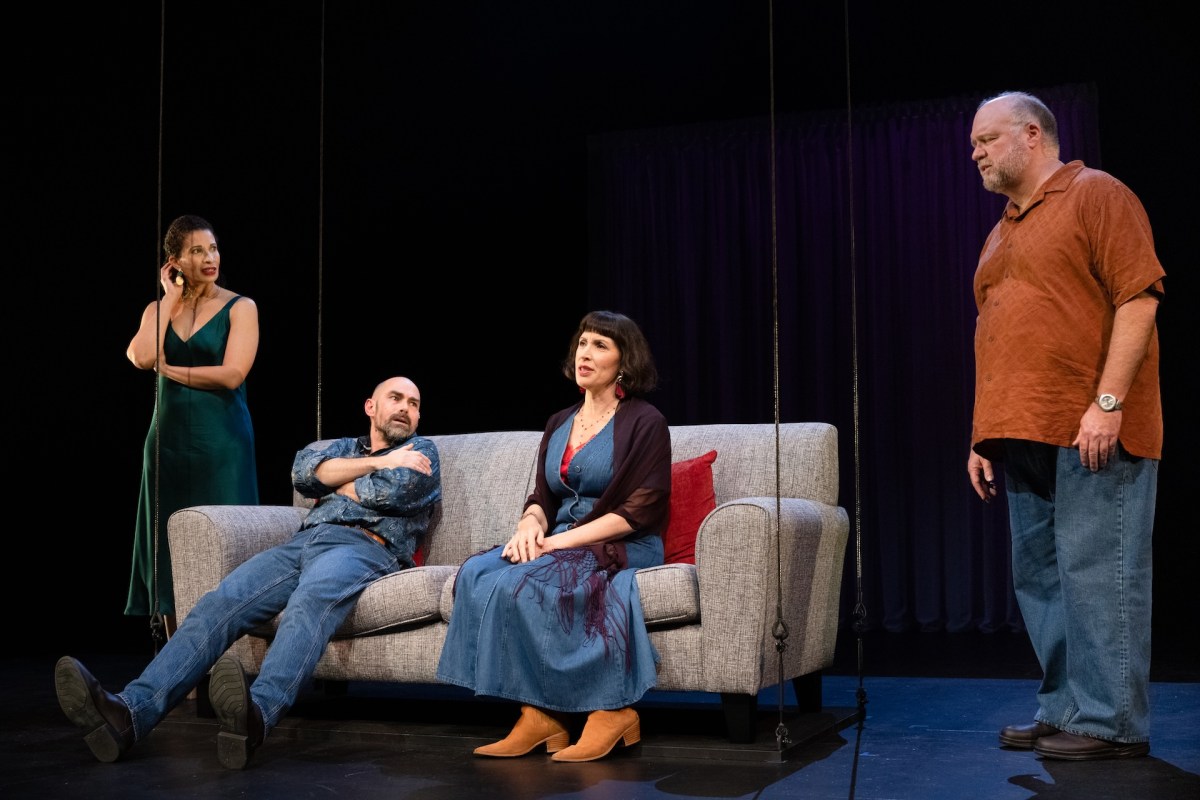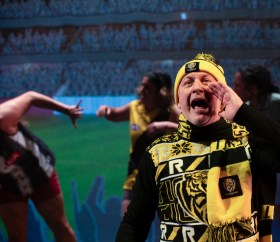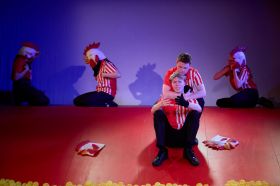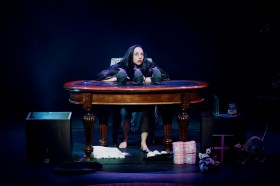Speaking in Tongues – quick links
Written by Andrew Bovell and directed by Humphrey Bower, Black Swan’s Speaking in Tongues is a genre-defying exploration of betrayal, shame, and consequence. One foot falls firmly in the corner of comedy, the other in the realm of psychological thriller … and one of those feet is missing a shoe.
From sombre monologues with comic delivery, to quips and asides that get the audience giggling, Speaking in Tongues alternates between funny and serious, flippant and profound.
Opening with disco ball lighting and flamenco music, two couples teeter on the precipice of an affair. Overlapping scenes play out in which each couple is invisible to the other, despite speaking mostly in unison. This approach is thematically appropriate, physically exemplifying the discomfort of two opposing states being held simultaneously.
Speaking in Tongues: story
The inherent hilarity of two couples attempting to cheat on each other, with each other, is a situational-comedy goldmine woven together with sinister threads. The all-seeing audience being ‘in on it’ makes the subtext even funnier (or heavier, depending on the moment) which heightens the overall tension.
As the story progresses, the couples’ lives are mirrored and inverted, with overt similarities placing emphasis on hidden contrasts. Bitingly funny dialogue is interspersed with revealing anecdotes, ranging from the profound to the seemingly random.
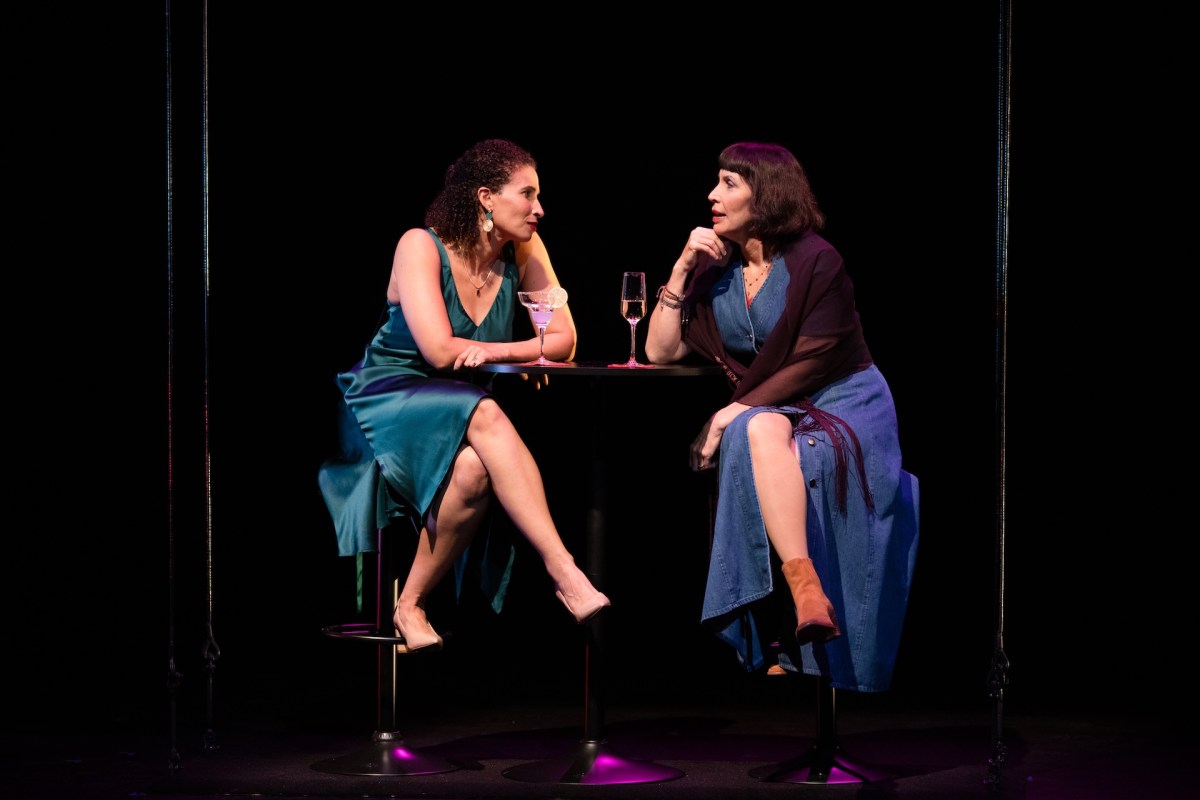
Multiple motifs echo across scenes, alongside subtle voyeurism and the ominous appearance of shoes. From the first cracks in a foundation of faith, to the dangerous repercussions of an absence of trust, these characters face consequences heavier than the sum of their parts.
Speaking in Tongues: structure
If Act 1 is about intimacy and betrayal, Act 2 centres around isolation and honesty. The same actors reappear as different characters, engaging with the same themes, viewed from different angles. Seemingly inconsequential asides turn out to be significant links in a chain of dire consequence, leading to disclosure of both the revelatory and confessional varieties. Comedy succumbs to horror in a 180-degree genre pivot.
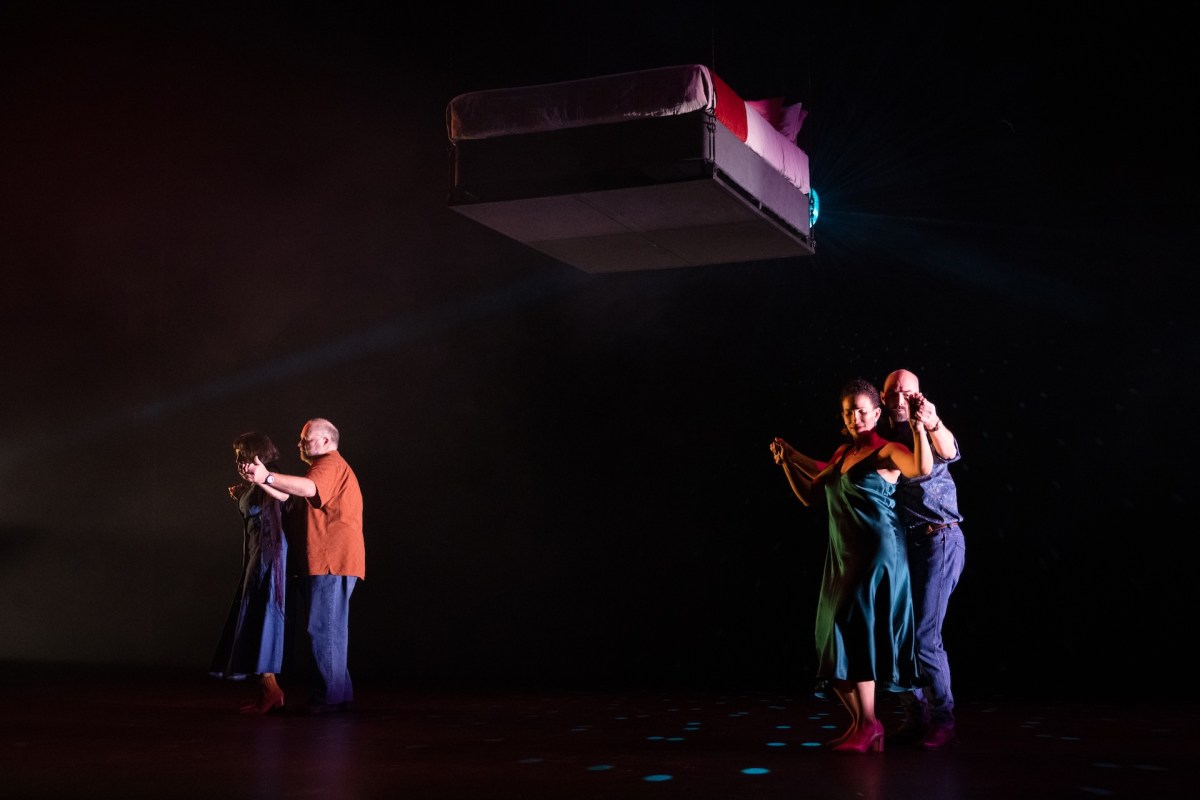
The original characters do return (along with their humour) after an unsettling interlude, vastly different to anything contained within Act 1. Evocative sound design raises this tension to paint an aural atmosphere of foreboding and suspense. Low-pitched hums conjure the controlled chaos of wind, waves, terror and the knot at the pit of a guilty stomach.
Speaking in Tongues: performances
From the standout performances of the multi-roled actors, to the transformative set design, layered narrative, and double-sided genre; every element of this production is prismatically multifaceted. With a few pulleys and ropes, the stage transforms from a hotel, to a home, to a bar. Four actors fluidly embody nine characters, balancing contrasting tones to shed light on darkness. Versatility is omnipresent across all facets.
Speaking in Tongues is a dance of figurative echoes, patterns, and contrasts. Just when the audience thinks they’ve internalised the steps, the beat changes, and new layers are revealed. Initially, the audience are led to believe they are privy to hidden intrigue. By the end – like many victims of betrayal – even the most astute observer may be left wondering how they didn’t piece the truth together sooner.
The talented cast, creatives and crew of Black Swan State Theatre Company elevate Bovell’s script to new heights in this darkly funny production.
